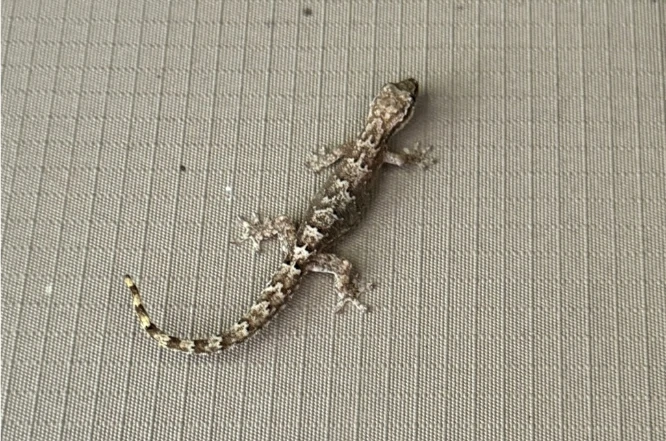If you’ve ever watched a gecko dart across a wall or a branch, you probably noticed its tail never stops moving. It wiggles, sways, curls, it almost looks alive on its own. So what’s the deal with that long tail?
Geckos have long tails for a few main reasons: to balance, to communicate, to store fat, and to trick predators. It’s not just decoration. That tail is a survival tool that helps them stay alive in the wild.
The Tail Does It All
Think of a gecko’s tail like a built-in Swiss Army knife. It helps them balance when climbing, stores energy for tough times, guides them while jumping, and can even save their lives.
Tail length depends on the gecko. Leopard geckos have short, thick tails full of fat.
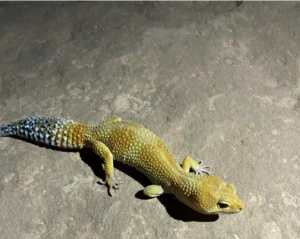
Day geckos or tokays have long, thin tails to move quickly through trees. Every tail fits the gecko’s way of life.
How the Tail Keeps a Gecko Balanced
Imagine trying to walk up a wall with no hands, you’d need perfect balance. That’s what geckos do all day.
The tail shifts slightly in the opposite direction of their body, keeping them steady. It’s especially helpful on smooth or slippery surfaces.
When they jump, the tail acts like a tiny steering rod. Scientists have filmed geckos adjusting their tails midair (almost like cats) to make sure they land upright.
Without the tail, geckos would look a lot clumsier.
Why Some Geckos Have Really Long Tails
Long tails aren’t just for show. They help with control and agility.
Tree geckos, like the flying gecko, have long, flat tails that act like parachutes. When they glide from tree to tree, the tail keeps them steady.
Cliff or rock geckos use long tails to grip surfaces. When they squeeze into tight spaces, the tail presses against the wall to help them stay put.
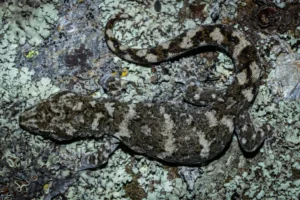
Even ground geckos use long tails to make quick turns when escaping predators.
The tail’s shape and length always match the gecko’s life.
The Tail Stores Fat and Acts as a Backup
Geckos also use their tails to store fat.
When food is easy to find, they eat a lot and fill their tails with fat. This gives them a backup supply during dry or cold times when bugs are scarce.
If you see a gecko with a thick, rounded tail, it’s healthy. It means the gecko is well-fed and ready for lean times.
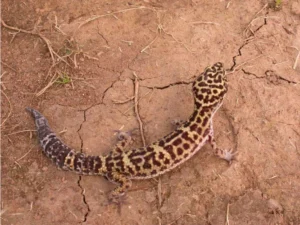
Leopard geckos are famous for this. Their tails can hold so much fat, they almost look like tiny sausages.
But if a gecko loses its tail, it also loses that energy backup. Surviving gets harder until the tail grows back.
How Geckos Use Their Tails to Communicate
Tails send messages too.
If a gecko feels threatened, it might lift its tail and wave it slowly. This distracts predators and tells other geckos something’s wrong.
During fights or mating, some geckos flick their tails to show confidence. Males may wag their tails to attract females or warn rivals.
Every tail movement carries a message, quiet, but clear.
When the Tail Becomes a Decoy
Here’s the cool part.
If danger strikes (a bird swoops, a snake strikes, or a predator grabs) a gecko’s tail can detach. This is called autotomy.
The tail falls to the ground and keeps twitching. The predator focuses on it, giving the gecko time to run away.
The gecko doesn’t bleed much because special muscles close the blood vessels when the tail comes off.
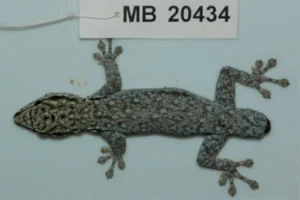
Still, losing a tail is expensive, it takes time and energy to grow back.
Can Geckos Regrow Their Tails?
Yes, but the new tail isn’t exactly the same.
It starts growing within weeks, using special cells that turn into new tissue. The new tail is often shorter, smoother, and sometimes a different color.
The original tail has bones; the new one is mostly cartilage.
Still, it works. The gecko can balance, store fat, and live almost like before.
Why Some Geckos Drop Their Tails More Easily
Some geckos drop tails faster than others.
House geckos, for example, will let go quickly if you try to grab them. It’s their best defense where cats, birds, or people might get too close.
Other geckos, like tokays, hold on tight. They’re strong and aggressive, so they rely on biting or hiding instead of dropping tails.
This shows how tail use evolved differently for each gecko species.
How the Tail Helps Geckos Move
Even when a gecko isn’t in danger, its tail is busy.
When they run up walls, the tail shifts weight with every step to keep them steady. When they stop suddenly, it helps prevent slipping.
Geckos even use their tails to push off when they fall, like a spring. This makes landings smoother and lowers the risk of injury.
It’s one of the many ways geckos’ bodies are built for climbing and being active.
Do Baby Geckos Use Their Tails the Same Way?
Not at first, but they learn fast.
Baby geckos hatch with small, thin tails. They can climb and balance, but the tail’s full use develops as they grow.
As they get stronger and more coordinated, they use tails for communication, hunting, balance, and defense.
By adulthood, every flick means something.
Can a Gecko Survive Without Its Tail?
Surprisingly, yes.
A tailless gecko can still climb, hunt, and escape predators, though it’s not as balanced or strong.
Without tail fat, surviving during food shortages is harder. The gecko has to eat more to make up for lost energy.
Still, nature gave them a backup plan. Even without a tail, they can live, grow, and regrow what’s lost, a recovery system few animals have.
Why Geckos Don’t Always Drop Their Tails
You might think geckos drop tails all the time, but they usually try to avoid it.
It’s their last option. Losing a tail costs energy and time. It takes weeks to grow back, and during that time, they’re more vulnerable.
That’s why most geckos bluff or hide first. They make chirping noises, wave tails, or freeze. Only when the danger is too close do they drop their tail.
The Color and Patterns on a Gecko’s Tail
Some geckos have tails brighter than their bodies. You’ll see bands, spots, or flashes of blue or orange.
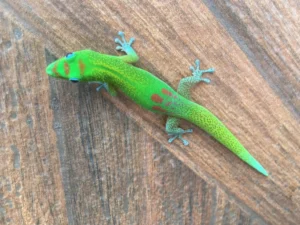
These patterns distract predators, drawing attention to the tail instead of the body. When the tail drops, the predator goes after it, giving the gecko a better chance to escape.
Young geckos often have bright tails. They’re smaller and easier prey, so the tail works like a built-in decoy from the start.
How Tails Help Geckos During Mating
Tails have another job during courtship.
Males flick or vibrate tails to show strength or interest. The speed and rhythm of the movement signal readiness.
Females may respond with smaller, slower tail movements, a quiet language between them.
It doesn’t happen in every species, but where it does, tails help geckos communicate.
Conclusion
Geckos have long tails because they need them, for balance, storing energy, communication, and defense.
Every flick, wiggle, and twitch has a purpose.
The tail helps them climb, jump, store fat, and escape danger, showing how perfectly these little reptiles are built for the world around them.
So next time you see a gecko’s tail swaying, remember, it’s not random. It’s a signal, a stabilizer, a storage tank, and a safety line, all rolled into one amazing extension of life.
Hi, my name is Ezra Mushala, i have been interested animals all my life. I am the main author and editor here at snakeinformer.com.

